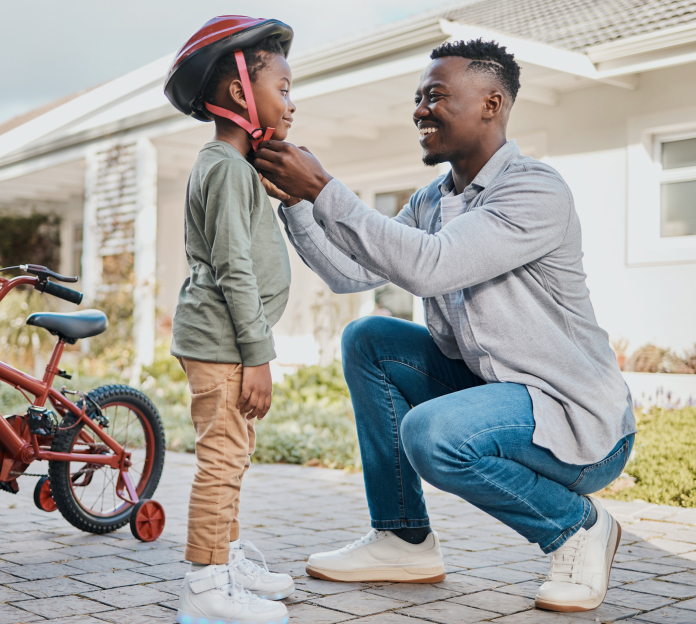Low back pain is common, but for women, there are unique factors that can affect both its cause and treatment. Understanding what makes female back pain different can help you know when to seek care — and how to get relief that works for your body.
Prachi Singh, DO, a primary care provider at Mount Nittany Health, shares what she sees most often in female patients and how they can take charge of their spine health.
Common causes of female back pain
Women’s bodies are built differently from men’s, especially in the hips, core and spine. These differences, while necessary for functions like pregnancy and childbirth, can lead to more stress on the back over time.
“Women have several anatomical factors that predispose them to back pain,” explains Dr. Singh. “The female pelvis is wider and shaped differently to accommodate childbirth, which changes the angle of the spine and can create different stress patterns on the lower back.”
“Women also tend to have less muscle mass in their core and back muscles compared to men, which means less natural support for the spine,” she continues. “Additionally, the female spine has a more pronounced lumbar curve, which can increase stress on the lower vertebrae.”
Understanding your back pain
Some women experience sharp, localized pain, while others feel a general ache across the lower back. The location and type of pain are often indicators of what’s going on.
“The most common complaints are lower back pain that worsens with prolonged sitting or standing, and pain that fluctuates with their menstrual cycle,” says Dr. Singh. “Focusing more heavily on core strengthening and pelvic floor exercises can be beneficial for alleviating pain.”
“We also have to pay closer attention to hormonal factors and lifestyle modifications that might be affecting their symptoms,” she adds, “which isn’t always a primary consideration in male patients.”
Female-specific back pain triggers
From puberty to menopause, hormone changes play a big role in spine health. Estrogen and progesterone impact muscles and ligaments in ways that men don’t experience.
During menstruation, hormones that loosen ligaments can affect spinal stability. “Hormonal fluctuations have a significant impact on back pain in women,” explains Dr. Singh. “During menstruation, rising estrogen and progesterone levels cause ligaments to become more lax, which can lead to increased spinal instability.”
Pregnancy introduces additional strain as the body adapts to carrying extra weight and preparing for delivery. “During pregnancy, the relaxin hormone further loosens ligaments while the growing baby shifts the center of gravity forward,” she says.
Postpartum recovery brings its challenges as the body readjusts and caring for a newborn introduces new physical demands. Later in life, menopause can affect bone density and muscle mass, potentially leading to increased back pain.
“At menopause, declining estrogen affects bone density and muscle mass,” notes Dr. Singh. “Calcium and vitamin D supplementation can benefit post-menopausal women.”
Other common factors that increase your risk of back pain include:
- Repetitive lifting, especially while caring for young children
- Prolonged sitting with poor posture
- Wearing high heels regularly
- Carrying heavy bags on one side
- Obesity or rapid weight changes
When to see a healthcare provider
Some cases of back pain can resolve on their own with home remedies. However, certain symptoms warrant professional attention.
“While most back pain isn’t dangerous, there are certain symptoms that require immediate attention,” says Dr. Singh.
Seek immediate care if you experience:
- Severe, sudden pain
- Numbness or tingling in the legs
- Loss of bladder or bowel control
- Pain accompanied by fever
- Weakness in the legs
- Pain following trauma
“Women should also seek care if their pain is severe enough to interfere with sleep or daily activities, or if it’s not improving after a few days of conservative treatment,” she adds.
Treatment and prevention strategies
Managing back pain in women often requires a personalized approach. That includes understanding your lifestyle, hormone history and overall health.
Regular movement helps maintain spine strength, especially when it includes core and pelvic floor exercises. Posture also plays a significant role, especially if you spend a lot of time sitting or lifting.
Lifestyle modifications that can help include:
- Maintain a healthy weight
- Wear supportive shoes
- Use proper lifting techniques
- Practice stress reduction
- Stay hydrated
- Ensure adequate calcium and vitamin D intake
- Core strengthening exercises
Your provider may recommend medical interventions for low back pain. This could include:
- Physical therapy
- Pain management techniques
- Medication when appropriate
- Hormone therapy for menopause-related symptoms
- Specialized pregnancy support devices
If you’re struggling with lower back pain, you’re not alone. Women face unique back challenges, but that also means there are targeted solutions that can help.
Orthopedics and Sports Medicine
Discover more about Orthopedics and Sports Medicine, including locations and providers, at Mount Nittany Health



